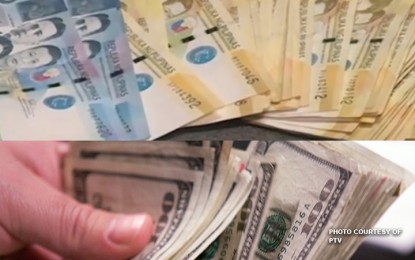
MANILA – Anticipation of the normalization of Federal Reserve’s monetary policy is among the primary reasons for the recent weakness of the Philippine peso against the greenback, a ranking Bangko Sentral ng Pilipinas (BSP) official said.
In a briefing streamed through the BSP’s Facebook page on Thursday, BSP Deputy Governor Francisco Dakila Jr. said the peso is now trading within the 48-53 per dollar assumption set by the inter-agency Development Budget Coordination Committee (DBCC) for this year until 2024.
To date, the local currency is trading at 50-level against the US dollar.
Dakila said the foreign exchange assumption reflects the uncertainty in the financial market given the impact of the pandemic.
Among the measures implemented by central banks around the world when the pandemic hit in 2020 was to cut key policy rates to help lift their respective economies.
Dakila said the latest depreciation of the peso “is consistent with expectations of a gradual normalization of the US Fed’s monetary policy.”
He said risk-off sentiments are also driven by the rise in coronavirus disease 2019 (Covid-19) cases as more contagious variants such as the Delta variant continue to infect more people.
“But again, over the horizon, as always, there are structural sources for foreign exchange flows for our economy and these include overseas remittances, receipts from the business process outsourcing as well as foreign direct investments, which has recovered quite strongly for this year,” he added.
Dakila said the country’s high gross international reserves (GIR), which stood at USD106.08 billion as of end-June 2021, is also a strong support to the local currency.
The end-June GIR level of the country was enough to cover 12.1 months worth of imports, the BSP earlier reported.
Dakila said these factors “are going to help stabilize any movements in the peso and we continue to expect that overall the balance of payment will post a surplus in 2022 but it will be at a more moderate level compared to 2021.”
“But moving forward, the BSP continues to adhere to a market-determined exchange rate system,” he added. (PNA)
